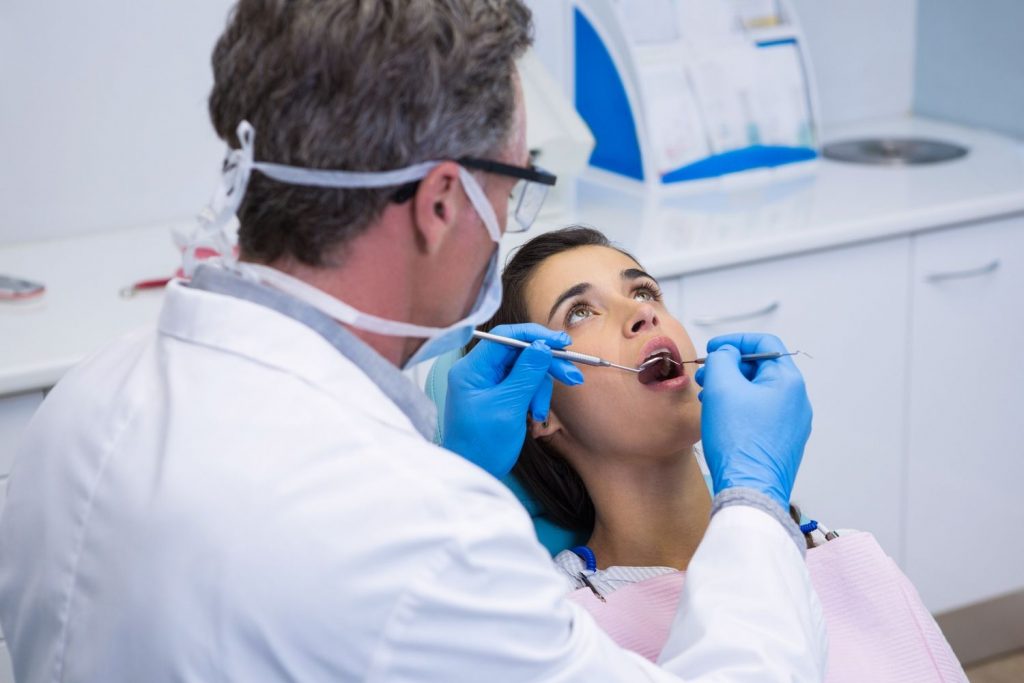Comitiva de Promoción del Sector Salud en Las Vegas, NV USA
El Baja Health Cluster formo parte de la Comitiva de Promoción del Sector Salud que visito Las Vegas, acompañando al...

Bad breath, also called halitosis, is a widespread condition that can affect people of any age. Indeed, about 30% of people may have bad breath.
It has been reported that Americans spend up to 3 billion dollars a year on gum, mints and breath fresheners, in most cases in order to improve their breath.
The type and intensity of bad breath may vary depending on the source and the underlying cause.
Although there rarely is a severe underlying disorder, bad breath may negatively affect quality of life and personal relationships. It can be socially embarrassing and may even cause anxiety.
Fortunately, in most cases, halitosis can be controlled, and simple treatment measures have been proven to be very useful.
Good looks aren’t what I look for in a man. That’s way down the list. If a man can make me laugh and stimulate me intellectually, then I wouldn’t mind if he was 4ft 8ins with a huge belly. The only thing that would put me off is bad breath – but even that can be fixed. A bad personality isn’t so easy to fix. ― Olga Kurylenko
Halitosis is defined as “oral malodor with intensity beyond a socially acceptable level perceived”
Halitosis is not a disease in itself but a symptom with a variety of underlying causes.
It is important to acknowledge that there is a difference between the occasional and temporary bad breath that most people experience and chronic bad breath.
Temporary halitosis may be caused by tobacco smoking and consumption of aromatic food such as garlic and onion or beverages such as alcohol and coffee.
Chronic halitosis, however, is most often due to microbial degradation in the oral cavity but may sometimes be caused by an underlying disease process.
Halitosis can be classified into three main categories: genuine halitosis, pseudo-halitosis, and halitophobia.
In genuine halitosis, the patient has obvious oral malodor with an intensity beyond socially acceptable levels.
Pseudohalitosis also called subjective halitosis or delusional halitosis (imaginary halitosis), describes a perception by the patient that halitosis is present although there is no objective evidence of bad breath.
The term halitophobia describes the persistent fear of having bad breath that other people find offensive. It is estimated that 0.5%–1% of the adult population is affected by this problem in their social life.
The term physiologic halitosis is used to describe bad breath that does not have a specific underlying cause. It is often transient and usually worse in the morning.
The term pathologic halitosis is used when the breath odor is a symptom of a disease or other pathologic condition, or aggravated by it.
Most often, physiologic halitosis is attributable to putrefaction processes taking place in the oral cavity, frequently within the white-colored coating found on the posterior portion of the tongue.
Bad breath commonly occurs in the morning. This type of bad breath is defined as physiologic halitosis and usually resolves immediately after brushing, flossing, eating, or drinking water.
Foul morning breath is believed to be partly caused by a relatively low flow of saliva during sleep. This may promote bacterial action on entrapped food particles present on the dorsum of the tongue.
Microbial degradation in the oral cavity is the primary cause of bad breath.
The primary causative microbes are gram-negative, anaerobic bacteria.
Volatile sulfur compounds (VSCs) are formed via the degradation of methionine and cysteine present in food particles. The most important VSCs involved in halitosis are hydrogen sulfide, methyl mercaptan, and dimethyl sulfide.
Other gases that may be responsible for halitosis are skatole, cadaverine, and putrescine.
The bacterial action causing oral halitosis most often takes place on material between the teeth and the dorsum of the posterior portion of the tongue.
Other causes of halitosis include disorders of the throat and nasal cavity, gastrointestinal disorders, and systemic disorders.
In nearly 85% of all halitosis cases, the origin is found in the oral cavity.
One study of 2.000 patients showed that 76% of halitosis had oral causes: tongue coating (43%), gingivitis/periodontitis (11%) or a combination of the two (18%).
Tounge coating is the most common cause of bad breath. The dorsum (upper surface) of the tongue is an ideal niche for oral bacteria.
Accumulation and putrefaction of food remnants, poor oral hygiene, dental plaque, and dental caries all contribute to bad breath.
It has also been shown that unclean acrylic dentures (worn at night or not regularly cleaned or with rough surfaces) contribute to bad breath.
Gingivitis and periodontitis are common causes of the halitosis.
Gingivitis is a common form of gum disease that causes irritation, redness, and inflammation of the gingiva, the part of the gum around the base of the teeth.
Periodontitis is a gum infection that damages the soft tissue and destroys the bone that supports the teeth. Periodontitis is common but largely preventable. It’s usually the result of poor oral hygiene.
Tonsillitis, an inflammation of the tonsils, may cause halitosis
Dry mouth (xerostomia) is a fairly common condition that may cause bad breath
Several commonly used drugs may cause dry mouth.
Yes, it can.
When halitosis has a nasal cause, nasal exhalation will cause more bad breath than oral expiration.
Halitosis originating from the nose may be caused by acute and chronic sinusitis and postnasal drip.
Zenker’s diverticulum may cause halitosis
Volatile substances originating from the stomach or esophagus may sometimes cause bad breath
Zenker’s diverticulum, a pouch of the upper portion of the esophagus, sometimes associated with difficulty swallowing, may cause halitosis. The bad breath is caused by the breakdown of stagnant food in the pouch by microorganisms.
Stomach ulcers and gastroesophageal reflux disease (GERD) may occasionally cause halitosis.
Advanced kidney disease, diabetic ketoacidosis, and advanced liver disease may cause bad breath.
Respiratory tract infections such as bronchitis are rare causes of halitosis.
Many medications can cause dry mouth which may lead to halitosis. Examples are diuretics, antihistamines, decongestants, tricyclic antidepressants, and amphetamines.
The following drugs may be directly responsible for oral malodor: dimethyl sulfoxide (predominantly used as a topical analgesic), cysteamine (used to treat patients with nephropathic cystinosis) nitrates and nitrites (used to treat angina pectoris), disulfiram (used in the treatment of alcohol dependence), penicillamine (used to treat rheumatoid arthritis), chloral hydrate (a sedative agent), suplatast tosilate (an anti-allergic agent), and paraldehyde (used to treat epilepsy).
Soure: https://www.docsopinion.com/2018/10/30/bad-breath-halitosis/


El Baja Health Cluster formo parte de la Comitiva de Promoción del Sector Salud que visito Las Vegas, acompañando al...


Add the items of your interest in your planner, you can delete or add items anytime. The heart at the right corner shows the amount of items in your planner.

Submit your name, email and additional information you need about the providers. Our Concierge will send you all the information you need.
Address: Mision de Santo Tomas 2812, Zona Urbana Rio (4,69 km)
Tijuana
Available from 9:00 am – 19:00 pm